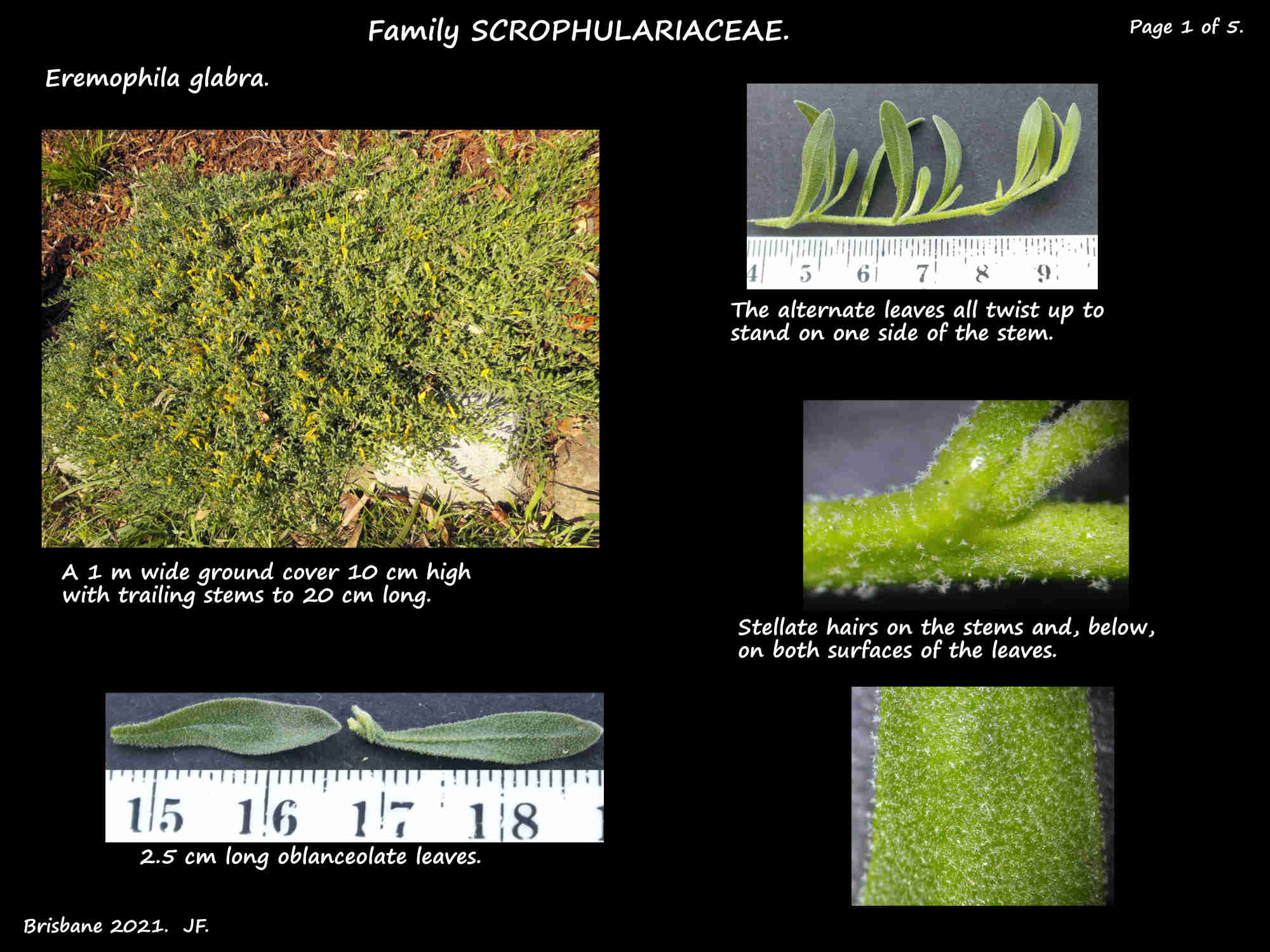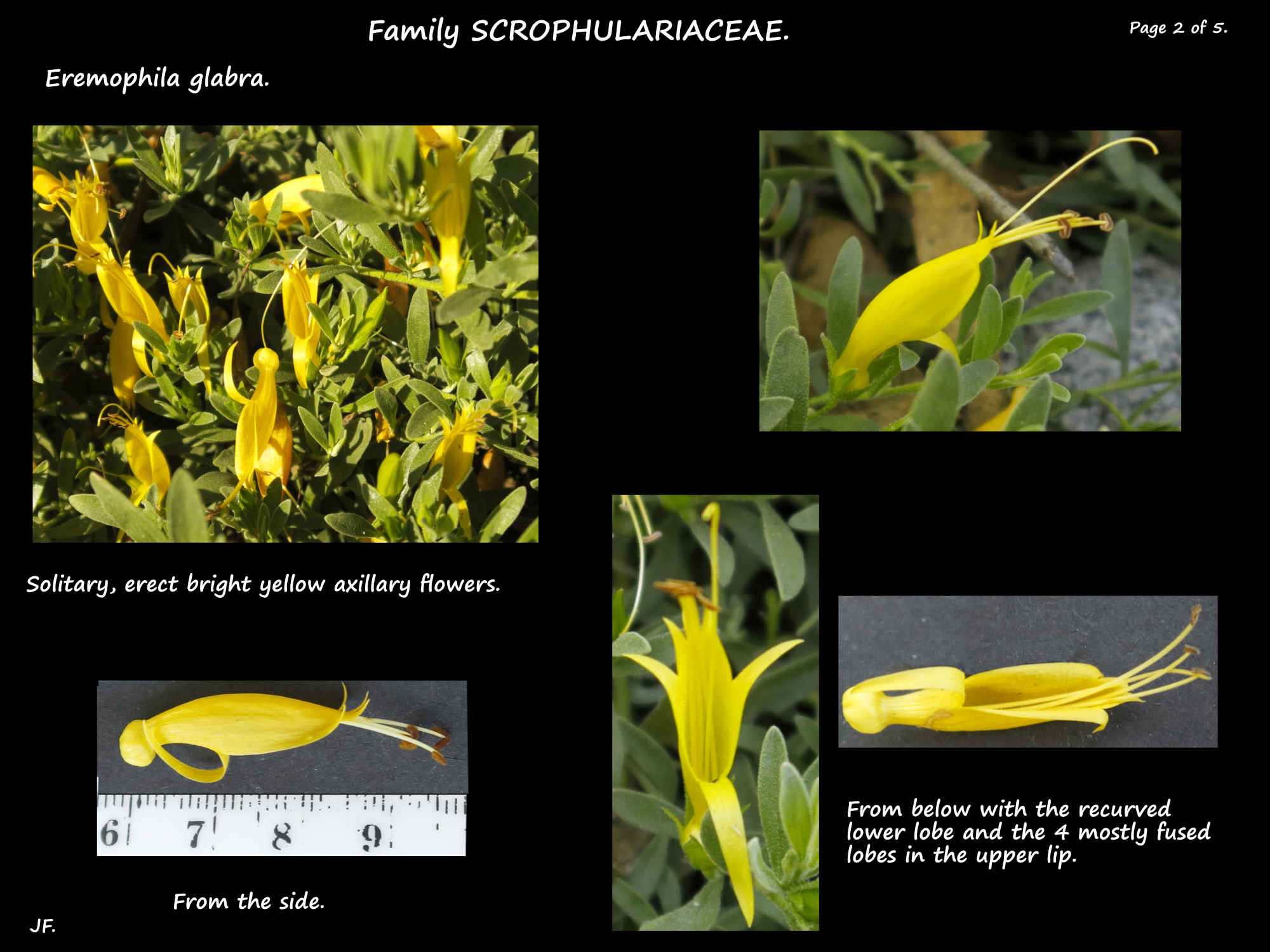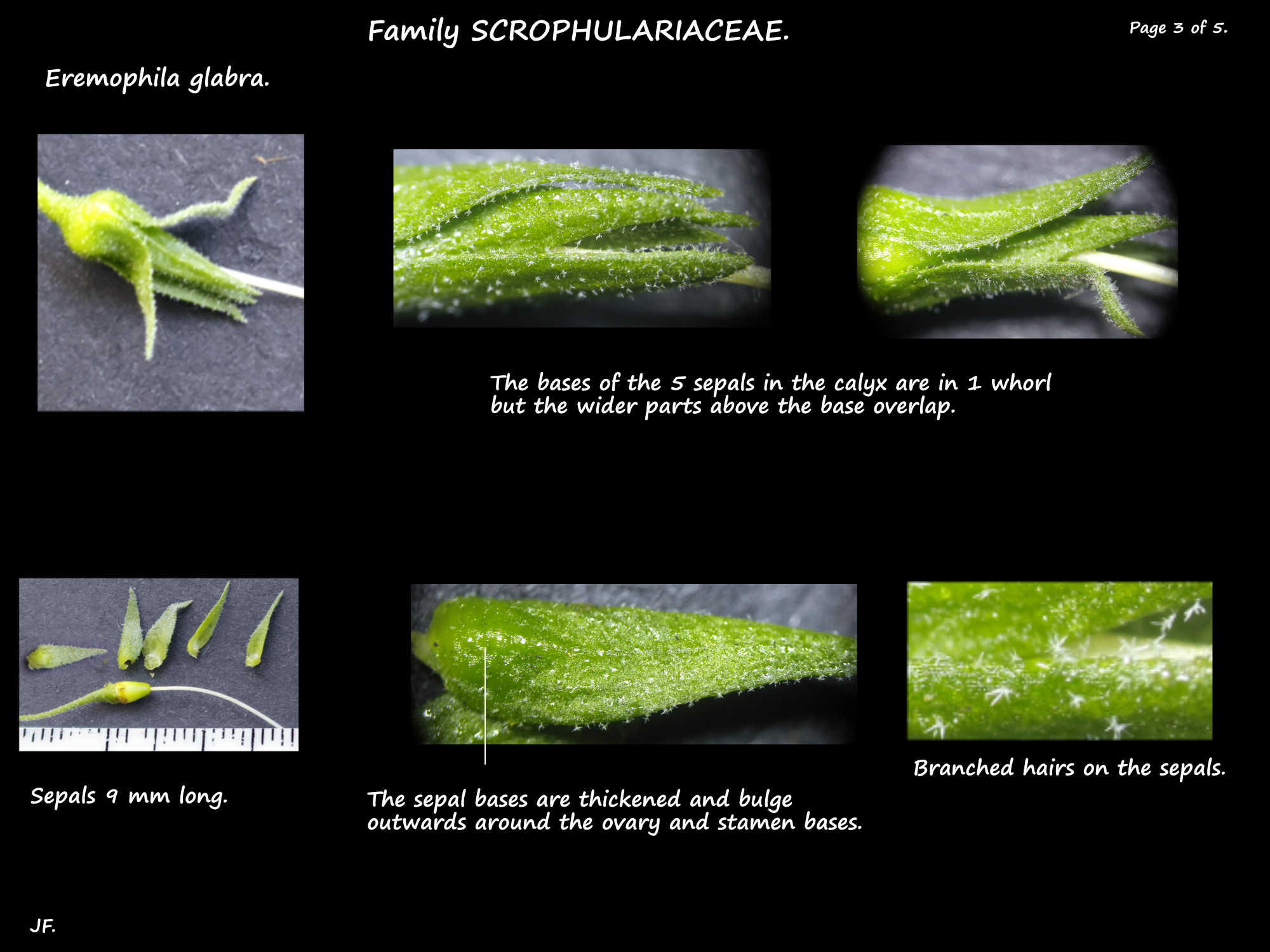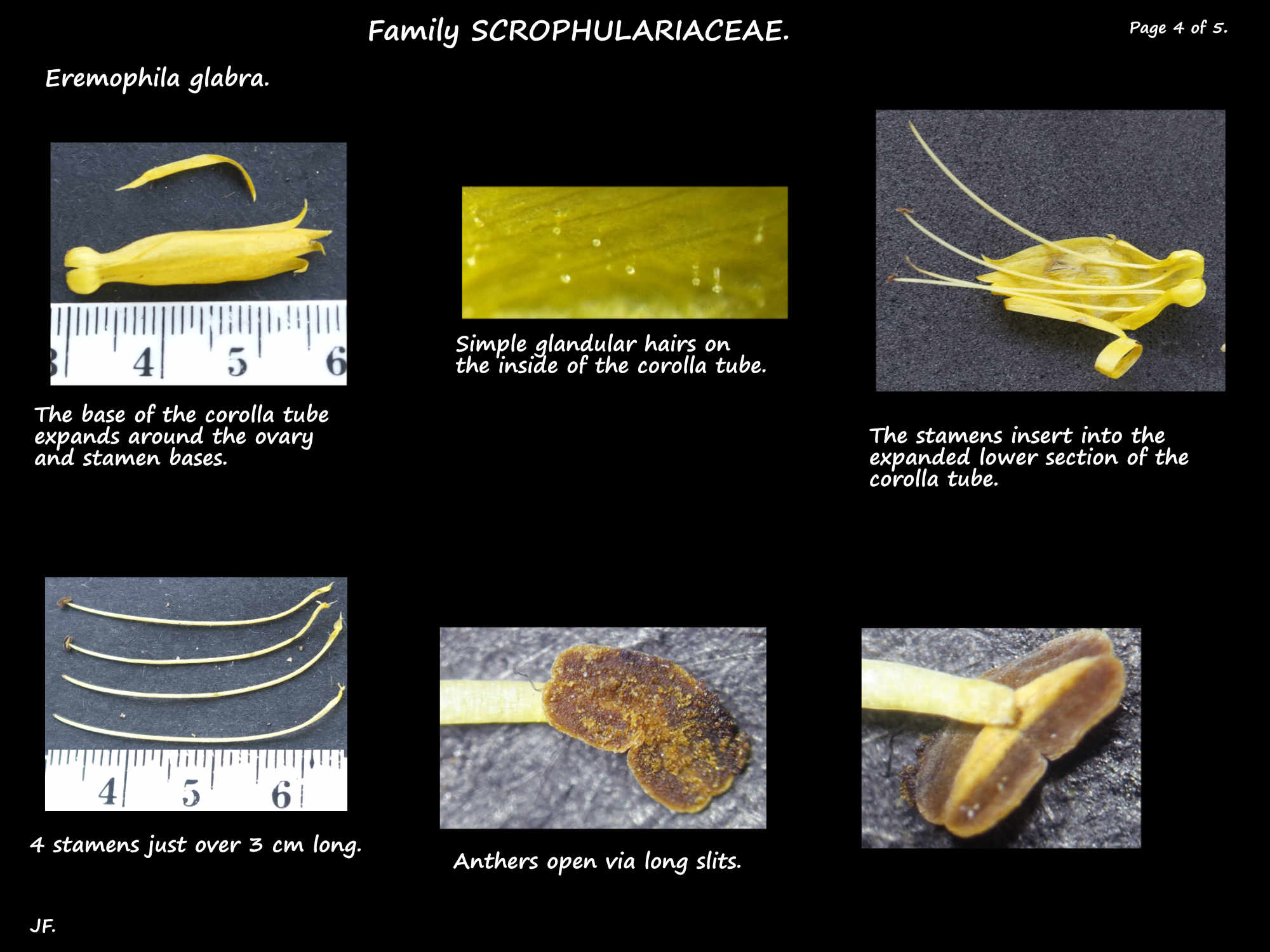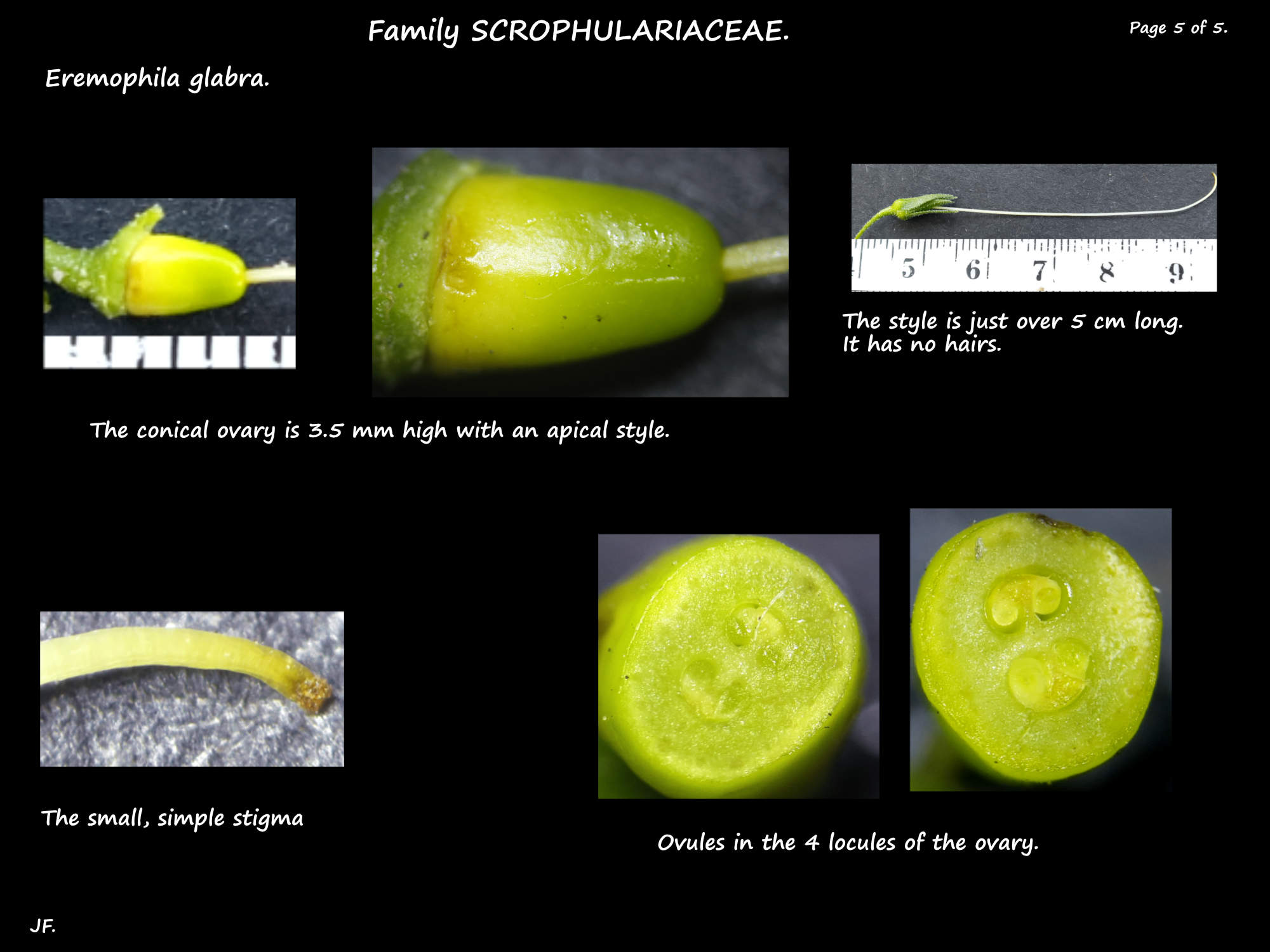Eremophila glabra.
E. glabra is an Australian native in Family Scrophulariaceae.
It is known as the Emu Bush as are numerous other species.
It is a very variable species with over 20 subspecies.
They are commonly seen as ground covers up to 2 (3) m wide and 10 to 20 (30) cm high.
However they can also grow as shrubs up to 2 or 3 m high.
Most have branched and glandular hairs on the stems, leaves and inflorescences.
The alternate leaves are variable in shape and size.
They can be 1 to 6 cm long and less than 1 mm up to nearly 2 cm wide.
They are often lanceolate or oblanceolate but may be ovate or linear.
The surface may be smooth or have sparse to dense stellate hairs.
Inflorescences are solitary axillary flowers on pedicels around 4 mm long.
Pedicels may be smooth or sparsely to densely hairy.
Plants have flowers on them for much of the year.
The calyx has 5 overlapping, triangular sepals only a few mms wide.
They may be of unequal lengths with the longest nearly 1 cm.
There are stellate or branched hairs on the outer surface.
The corolla, of 5 petals is 2 to 3 cm long.
The petal bases are fused into a curved tubular section which is swollen at the base around the ovary.
The lobes form 2 lips with 4 in the upper lip and 1 in the lower.
Those in the upper lip are fused for around three quarters of their length.
The one in the lower lip curves backwards.
All 5 lobes are narrow and triangular with pointed tips.
There may be small glandular hairs on the inner surface of the corolla.
Flowers can be yellow, red, orange or greenish and they have no spots.
The 4 stamens are inserted into the middle section of the swollen corolla base.
Almost a third of their length is beyond the end of the corolla.
The pale yellow filaments may be smooth or have a few glandular hairs.
The superior ovary and the apical style have no hairs.
The ovoid to nearly spherical fruit are up to nearly 1 cm wide.
They are brown and have no hairs.
There are number of forms and cultivars used in gardens.
J.F.
